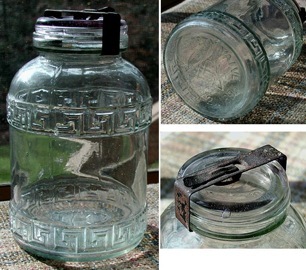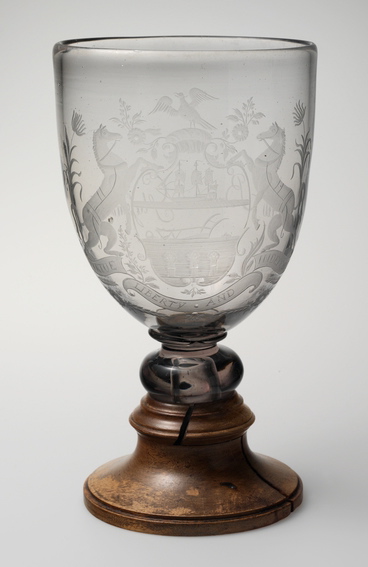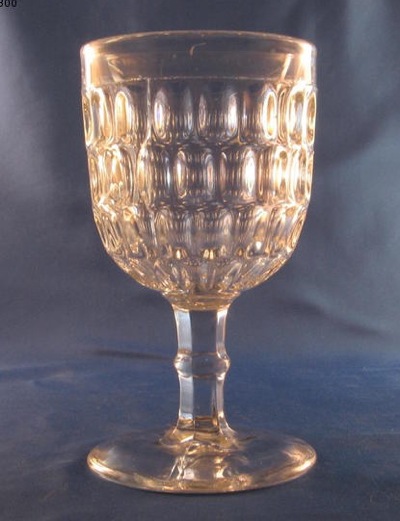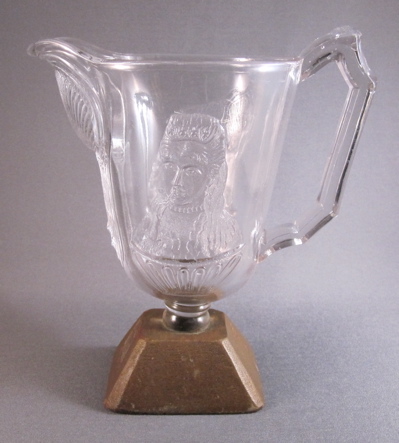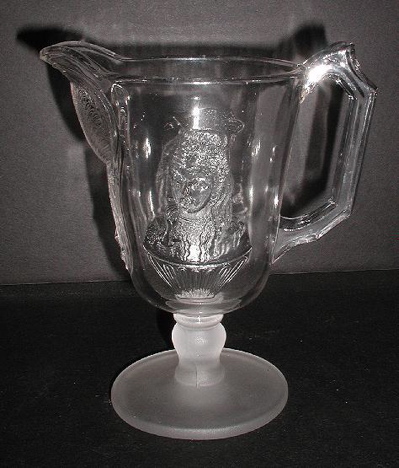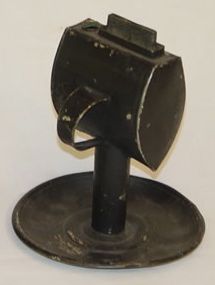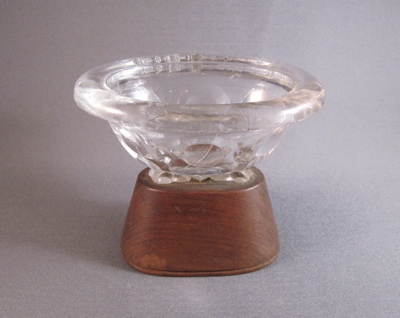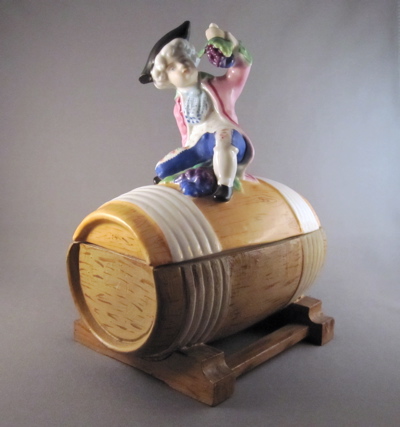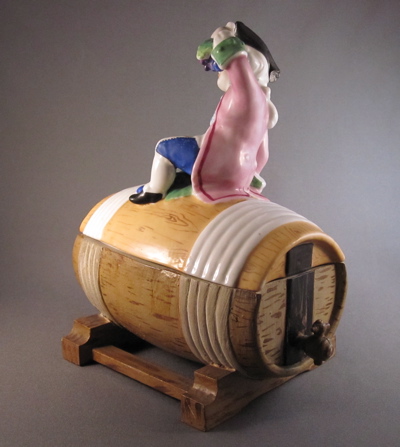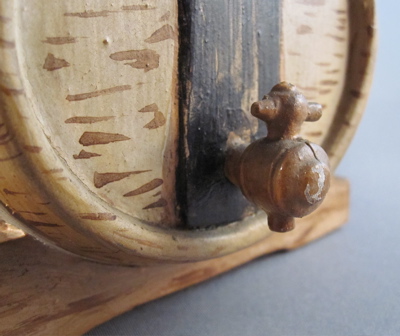This strange pressed glass square-shaped bottle with molded Greek key band design was found in Virginia and sports a rustic “make-do” base. It has a mismatched, ill-fitting glass stopper of a different color, replacing a more fanciful stopper, no doubt. I imagine it would have looked a bit out of place on a lady’s vanity or dresser among her other delicate bottles and toiletries
Bottle stands 4″ high and has a square over-scaled unfinished wood base, replacing the original glass base that broke off years ago
This canning jar has the same Greek key design and is marked on the bottom: “HC” over a triangle, “Safety Valve Patd May 21, 1895”
Photo courtesy of Ed & Lucy Faulkner


